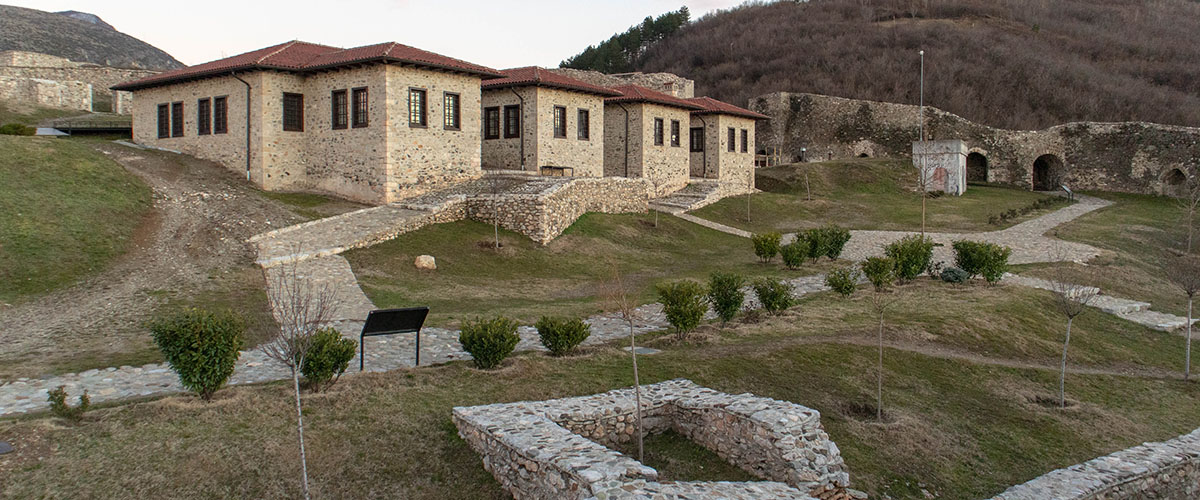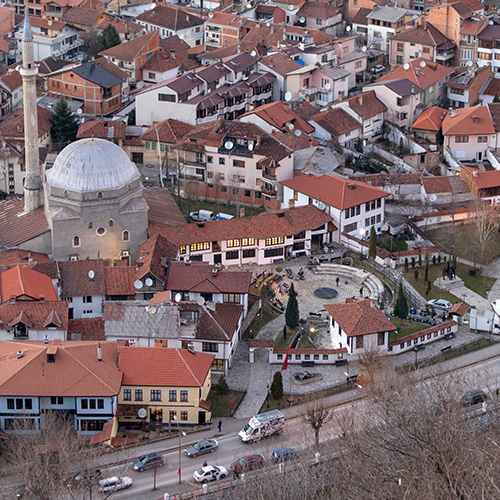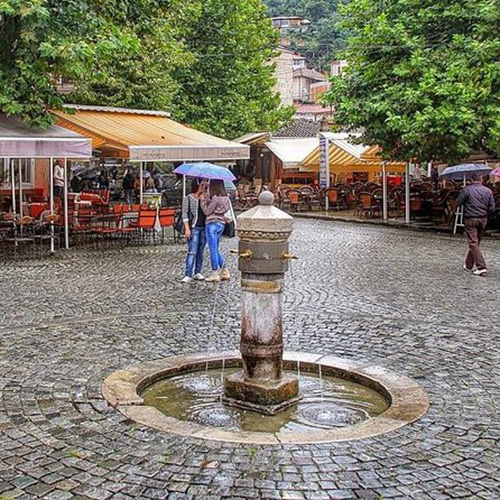Monuments

Prizren’s essential features are the combination of different civilizations and existence of beautiful works. City overlaps its past with the present. On one side, the architecture testifies the antiquity of this settlement, while on the other hand the rich cultural life has turned the city into the epicenter of contemporary art in Kosovo. Through the city runs the Lumbardhi River where festivals are held. In the Hamam of Mehmed Pasha the exhibition and fairs halls are opened, that convert the streets of Prizren in to a museum of the film curtain screen. Era after era, ranging from the Roman period and continuing into the Ottoman period and then to post World War II, the city has developed and with this load of civilization celebrates its independence. From the verge of the Shar mountain emanates rapid water. Viewing the city from Topokli, you see how close the Ottoman Mosque, Orthodox Church and the Catholic Cathedral are. The city has experienced a lot of hatred which caused destructions and tragedies, but despite numerous difficulties, Prizren is today a symbol of coexistence and welcoming to people who are willing to appreciate it. River banks of Lumbardh in the city are connected by bridges. There is no data for the first bridge and its image, as exiting the gorge Lumbardhi had another bed. In the 18th century over the Lumbardh there were nine bridges, although the places of bridges are not defined and they were not named, and it seems that they were located in the narrow space of the city respectively Marash bridge-Shotmanit, League, Arasta bridge, Stone Bridge and the Nalet Bridge (Satan), Beledije bridge, Suzi Çelebi bridge, Kacanik (in Tabakhana) and Buzagillek. Before the construction of Stone Bridge and the Suzi Çelebi one, all the bridges were built of wood. Prizren is not only the richest city in Kosovo with water, but it’s also one of the richest cities in the Balkans. The use of drinking water from multiple sources within city space is an early practice, but the data regarding the beginning of use in an organized manner do not exist.



Accurate records for the water-supply network in Prizren are encountered in the 80’s of the 16th century, during Ottoman ruling. Besides family fountains, in key places within the city space as well as near mosques and their courtyards were built public water sources. According to Salname of Prizren from 1974, the city had 150 springs and by the end of the century the city had 196 springs. One of the most visible evidences of the historic urban structure of Prizren are its old houses or urban homes. These houses retain details of styles and different architectures including those of Oriental and Austro-Hungarian. Finally, Prizren, is also known as the center of important archaeological findings. One of the most spectacular discoveries is the “Prizren Runner” dating from the years 520 - 500 BC.

